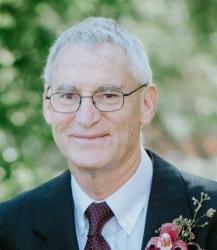There are different kinds of baseball heroes, and they are heroes all.

Broken nose didn’t matter on this day (photo, Federal Baseball)
In June 2019, one day after breaking his nose while fouling back a bunt attempt into his face in batting practice, Max Scherzer of the Washington Nationals pitched seven shutout innings in a 2-0 win over the Philadelphia Phillies. His face looked awful, black-and-blue around the eye sockets, nose all banged up, but it did not affect his pitching. Or maybe it motivated the big right-hander, already known for his toughness.
Scherzer is not alone. There have been other notable one-game heroics by injured baseball players.
Curt Schilling’s bloody sock is now in the Baseball Hall of Fame. In Game 6 of the American League Divisional Series against the Yankees in 2004, he took the mound even though he had torn his tendon sheath earlier. He pitched seven innings of one-run ball to help Boston win and even the series at three games apiece. By the end of his outing, TV viewers could see blood soaking through his sock. Boston won the seventh game and went on to win the World Series.
A’s fans would rather forget, but in Game 1 of the 1988 World Series, the Dodgers’ Kirk Gibson, who had a torn hamstring in his right leg, ligament problems in his left knee and could hardly walk, came out to pinch hit in the ninth inning against Dennis Eckersley. With the Athletics hanging on to a 4-3 lead. Gibson guessed right on a 3-2 slider, leaned over, and hit a two-run walk-off homer, which fired up the Dodgers for the rest of the Series, which they won four games to one.
Scherzer, Schilling, and Gibson played amazingly through their injuries in those heroic games. But how about Jim Abbott, who played every game with a congenital defect? Born without a right hand, he pressed on toward his dream of playing major league baseball. Abbott would lay his glove on his right forearm, throw the pitch, and then put the glove on his left hand in time to field any ball hit or bunted his way. Selected in the first round of the 1988 MLB draft by the California Angels, Abbott was in the big leagues the following year. He played ten seasons and won 87 games, including a no-hitter with the New York Yankees in 1993.
Abbott’s accomplishments represent baseball heroics that were the product of long-term, not one-day, feats. Here are other examples.
Known as the “Iron Horse,” Yankee legend Lou Gehrig played in 2,130 consecutive games over 15 years before he was diagnosed with ALS, now commonly known as Lou Gehrig’s Disease. His farewell speech was one of baseball’s most heart-wrenching yet most amazing moments.
Cal Ripken Jr. eclipsed Gehrig’s record on September 6, 1995, when he played in his 2,131st consecutive game. For good measure, he hit a deep home run to left field during that game. He went on to play a total of 2,632 straight games.
Other baseball heroes played through intense mental pressure.
In the case of Roger Maris, it came through the media and the baseball establishment in 1961 when he broke Babe Ruth’s single-season home run record, belting his 61st on the season’s final day. Maris was a relative newcomer to the Yankees and shy, and the media wanted the popular Mickey Mantle to break the record. And he might have. Mantle had 54 home runs heading into September but injured his hip.
In July, when it became evident that either Mantle or Maris or both might hit more than 60 home runs, baseball commissioner Ford Frick, a pal of Babe Ruth, announced that he wouldn’t consider the record broken unless the player did it in 154 games, the length of the season in Ruth’s era. Major League Baseball, due to expansion, began the 162-game season in 1961.
The pressure on Maris caused him to lose great clumps of hair and chain-smoke as he chased the Babe’s record. But he let nothing deter him. It was a magical season for those like me who lived in the New York area at the time.
So, as far as MLB was concerned, there were two records—Ruth for the 154-game season and Maris for the 162-game one. Finally, in 1991, six years after Maris had died of cancer, an MLB committee voted to remove the distinction and award the record fully to Maris.
Just as difficult, if not more so, was what Hank Aaron endured en route to breaking Ruth’s career home record 714 in 1974. Aaron had ended the previous season with 713 home runs. All winter, he received hate mail and death threats just because he was a Black man trying to break Ruth’s record. Not only was the Babe white, but he was considered the greatest player of all time.
Hammerin’ Hank let nothing stand in his way, hitting home run number 715 off the Dodgers’ Al Downing on April 8 in front of a sellout crowd of 53,775 at Atlanta-Fulton County Stadium. Here’s what Mantle said about Aaron: “As far as I’m concerned, Aaron is the best ball player of my era. He is to baseball of the last 15 years what Joe DiMaggio was before him. He’s never received the credit he’s due.”
In breaking baseball’s color barrier, Jackie Robinson, a fiery competitor, had to control his emotions, especially in his first year, 1947, and avoid fighting back on the field when opponents threw at him or tried to spike him. He had to brave constant threats and mass taunts from fans, even opposition from his Brooklyn Dodger teammates, until shortstop Pee Wee Reese led by example in accepting Jackie. Robinson won Rookie of the Year that year. To perform at the level under that intense pressure and scrutiny was incredibly courageous. His number 42 is retired throughout baseball.
There are different kinds of baseball heroes, and they are heroes all.














